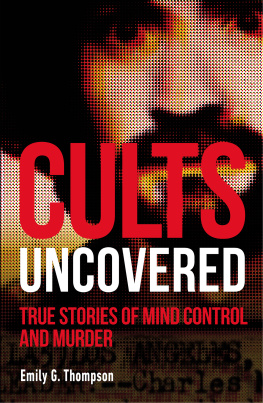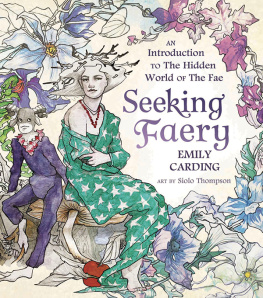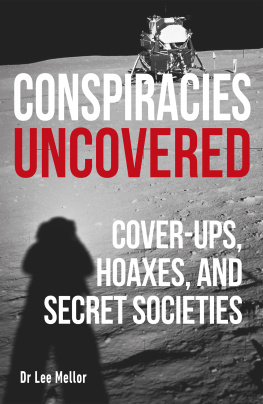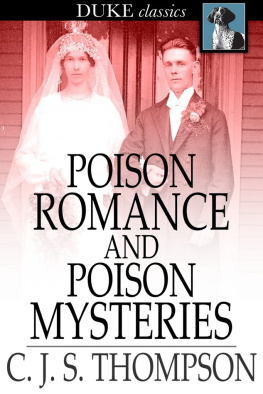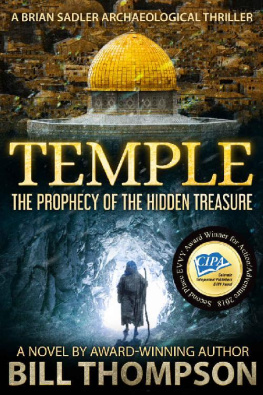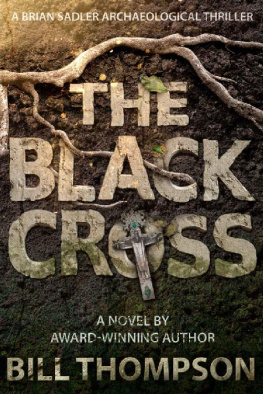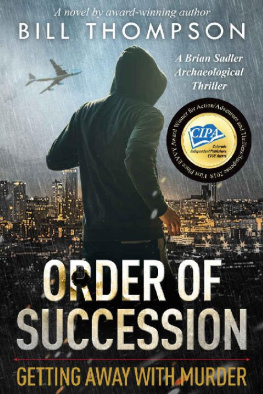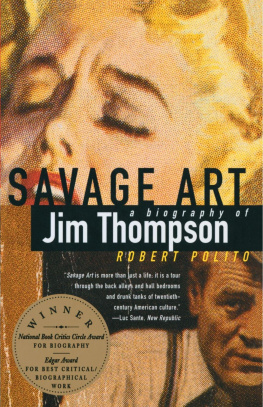Emily G. Thompson - Mysteries Uncovered
Here you can read online Emily G. Thompson - Mysteries Uncovered full text of the book (entire story) in english for free. Download pdf and epub, get meaning, cover and reviews about this ebook. publisher: DK Publishing, genre: Science fiction. Description of the work, (preface) as well as reviews are available. Best literature library LitArk.com created for fans of good reading and offers a wide selection of genres:
Romance novel
Science fiction
Adventure
Detective
Science
History
Home and family
Prose
Art
Politics
Computer
Non-fiction
Religion
Business
Children
Humor
Choose a favorite category and find really read worthwhile books. Enjoy immersion in the world of imagination, feel the emotions of the characters or learn something new for yourself, make an fascinating discovery.
- Book:Mysteries Uncovered
- Author:
- Publisher:DK Publishing
- Genre:
- Rating:5 / 5
- Favourites:Add to favourites
- Your mark:
- 100
- 1
- 2
- 3
- 4
- 5
Mysteries Uncovered: summary, description and annotation
We offer to read an annotation, description, summary or preface (depends on what the author of the book "Mysteries Uncovered" wrote himself). If you haven't found the necessary information about the book — write in the comments, we will try to find it.
Mysteries Uncovered — read online for free the complete book (whole text) full work
Below is the text of the book, divided by pages. System saving the place of the last page read, allows you to conveniently read the book "Mysteries Uncovered" online for free, without having to search again every time where you left off. Put a bookmark, and you can go to the page where you finished reading at any time.
Font size:
Interval:
Bookmark:

UNCOVERED
PARANORMAL AND UNEXPLAINED
Written by
Emily G. Thompson

How to use this eBook
Preferred application settings
For the best reading experience, the following application settings are recommended:
- Colour theme: White background
- Scrolling view: [OFF]
- Text alignment: Auto-justification [OFF](if the eBook reader has this feature)
- Auto-hyphenation: [OFF](if the eBook reader has this feature)
- Font style: Publisher default setting [ON](if the eBook reader has this feature)
<
To this day, nobody knows what became of the 115 pioneering souls who made up the Roanoke Island Colony, Americas first-ever English settlement. Were they killed? Did they succumb to disease or starvation? Did they leave the island for the nearby mainland? Speculation about their fate has endured for centuries. What became of the Lost Colony remains one of the USs greatestand earliestmysteries.
The English were very backward in
trying to manage in that environment.
Historian Karen Kupperman
T he first Roanoke Island Colony was established in 1585. It was sponsored by the renowned explorer and polymath Sir Walter Raleigh, at the behest of Queen Elizabeth, who hoped the settlement would yield gold, silver, and other riches that could be brought back to England. Ralph Lane, governor of the colony, called the island, situated just off the coast of what is now North Carolina, the goodliest and most pleasing territory of the world. The first group of 108 pioneers built a fort and cabins, but after 11 months, they were forced to return to England owing to scarce food and deteriorating relations with the American Indians in the area. In fact, the party left so quickly that three men who had left the camp on an expedition were left behind. What became of this unfortunate trio remains a mystery.
Shortly after the colonists abandoned Roanoke Island, the English sea captain Sir Richard Grenville arrived. Discovering the deserted settlement, he left behind some men and enough supplies for two years. These men also vanished.
Two years later, in July 1587, a second group of settlers, including 90 men, 17 women, and 11 children, was dispatched to found a permanent settlement in the New World. Sir Walter Raleigh had bankrolled a settlement for the shores of Chesapeake Bay. However, the captain mysteriously dumped the colony at Roanoke Island instead. Some historians have speculated that the navigator, Simon Fernandes, wanted to drop the settlers off as quickly as possible so that he could return to sea to attack Spanish ships that were sailing up the coast, loaded with valuable cargo from Spains South American colonies.
The settlers were led by John White, who was an artist and not an explorer. He brought along with him his pregnant daughter, Eleanor, and her husband, Ananias Dare. Eleanor gave birth to a daughter, Virginiathe first English child born in the New Worldon August 18.
Despiteor because ofthe fact that virtually nothing is known about her, Virginia Dares name has echoed through the centuries, with speculations on her mysterious fate sparking controversy. She became a symbol of innocence and purity; a legendary heroine of tales celebrating the first white settlers pioneering spirit; her name was used to advertise all sorts of goods; and numerous places in North Carolina were named after her. To American Indians and African Americans, the name Virginia Dare would come to have very different significance: It would become a potent symbol of white supremacy by Anglo-Americans seeking to reaffirm their racial dominance.
Shortly after Virginias birth, White left the settlers on Roanoke Island while he sailed back to England for more supplies. He had anticipated the round trip to take months; delayed by war between England and Spain, however, he didnt return until 1590. When he finally reached Roanoke, he discovered that the entire colony had vanished. His account of what he found there was published in 1600 by Richard Hakluyt in Principal Navigations, Voyages and Discoveries of the English Nation.
White recorded that there was no sign of a struggle or battle. In fact, there was little evidence of the settlement site at all, except for a few cannonballs and a log stockade that had enclosed the colonists dwellings. There were intriguing clues, potentially hinting at their whereabouts, notably the word Croatoan carved into a post and Cro carved into a tree. Before White had left for England, the majority of the Roanoke Colony had been planning to move 50 miles into the maine, referring to the mainland.
Presuming that they had joined the friendly Croatan tribe that lived on Croatoan Island, White planned to sail there the next day. However, a storm blew White and his fleet out to sea. The weather damaged Whites ship, forcing the crew to abort the search and sail back to England, never to return.
White took solace in the apparent message that was carved into the post: I greatly joyed that I had found a certain token of their being at Croatoan where Manteo was born. Manteo was a leader from Croatoan Island who became friendly with the Roanoke Colony and was even baptized a Christian on Roanoke Island. However, no Englishman would ever see the Roanoke colonists again.
Numerous conspiracy theories and plausible scenarios have attempted to explain the settlers disappearance. Historians, determined to fill in the blanks of history, have spent centuries tracking down the very few tantalizing clues left about the fate of the Lost Colony. Some commentators believe that the colonists resettled elsewhere, while others think they merged and interbred with American Indians.
There has also been widespread speculation that they were massacred by a local tribe. By the time the colonists settled on Roanoke Island, the area had been the scene of regular conflicts for generations. Not only were the regions tribes disrupted by European colonization; the Spanish had explored and settled along the East Coast for decades before the English had even arrived. Some American Indians, such as those in the Chesapeake area, were friendly; but other tribes, such as the Powhatan of coastal Virginia, who were led by a powerful chief named Wahunsonacock, were fiercely opposed to English settlers encroaching on their territory.
Around 17 years after the doomed attempt at colonization on Roanoke Island, explorers from the Jamestown Colony in Virginiathe first permanent English settlement in the New Worldresolved to investigate what had happened to the Roanoke community. According to William Strachey, Secretary of the Jamestown Colony from June 13, 1610, to the summer of 1611, the Roanoke Colony had been murdered by the Powhatan. He described this incident as the slaughter at Roanoke. Allegedly, the Roanoke Colony had moved north to the southern shores of Chesapeake Bay. The Chesapeake Indians were the only tribe in the area who had not submitted to Wahunsonacocks Powhatan, and they accepted the Roanoke colonists as their allies. Research showed that the Roanoke Colony would not have fared well without assistance from friendly natives. According to the historian Karen Kupperman, who specializes in 16th- and 17th-century colonialism, The English were very backward in trying to manage in that environment.
Font size:
Interval:
Bookmark:
Similar books «Mysteries Uncovered»
Look at similar books to Mysteries Uncovered. We have selected literature similar in name and meaning in the hope of providing readers with more options to find new, interesting, not yet read works.
Discussion, reviews of the book Mysteries Uncovered and just readers' own opinions. Leave your comments, write what you think about the work, its meaning or the main characters. Specify what exactly you liked and what you didn't like, and why you think so.


